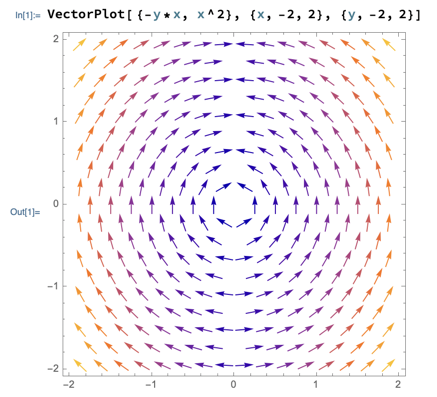Anything You Want to Talk About?
(No.)
Final Exam Time
The current plan is to use our final exam time (Tuesday, December 20, 8:00 - 11:20) for grading meetings.
That time will show as “Busy” on my calendar, but go ahead and ask for appointments during it. As long as the invitations come from someone in this class (and don’t conflict with someone else in the class) I’ll accept them.
Divergence
From “Divergence” in section 5.5 of the textbook.
Key Ideas
The formula for divergence:
Divergence has a notation based on the same “nabla” that’s used for gradient. There’s a metaphor (but not exactly a mathematical meaning) in this notation that helps you remember formulas through their similarities to scalar, dot, and (for curl, coming up on Monday) cross products:
Divergence measures flow away from points. 0 means no net flow, positive means flow away from a point, negative means flow towards a point.
Source free fields have divergence 0.
Applications: magnetic fields have divergence 0.
Examples and Applications
Find some divergences. In all cases, this amounts to taking partial derivatives of the components of the vector field and adding them together:
My beer-brewing example found that flux across my bag of grains is 0; if divergence measures the tendency of a vector field to flow away from a point, the divergence of the flow field (F(x,y) =⟨ -y, x ⟩) at the center of the bag should also be 0. Is it?
Yes. And we didn’t even need to plug (2,0) into the divergence, because it’s 0 everywhere:
Can the field F(x,y) =⟨ -yx, x2 ⟩ be source free?
No, because it’s divergence isn’t always 0:
If field F above represents the flow of water over a surface, which point(s) is water dispersing away from, which is it concentrating towards, and where is it exactly balanced so as to be neither concentrating nor dispersing?
Use the sign of divergence to find that the flow is converging for all points where y > 0, diverging for all points with y < 0, and doing neither along the x axis, where y = 0:
You can see the flow patterns visually in a plot of the field. The pattern is particularly pronounced along the y axis:

Next
Curl.
Please read “Curl” in section 5.5.